Why a Romantic Artist Turned Pessimistic and Painted Eerily Disturbing Artworks
The secret behind 'Saturn Devouring His Son'
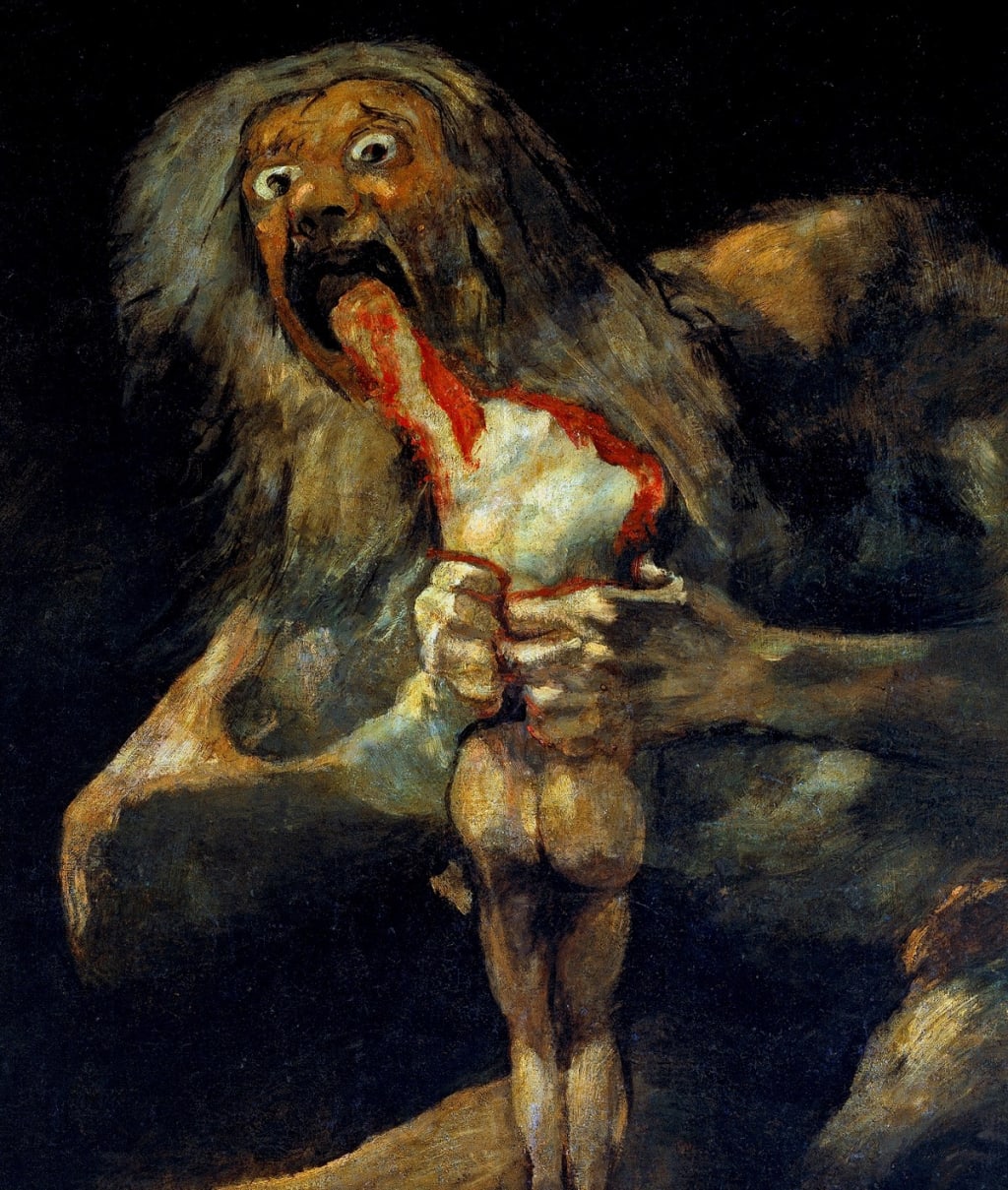
Francisco Goya was a legendary Spanish artist who was accorded the title of the first 'modern artist'. His initial career was marked with Rococo-style paintings portraying drama, peasantry, and exuberance. But between 1819–1823, he illustrated a series of dark and disturbing paintings that were discovered 50 years later from his country house in the outskirts of Madrid.
An ancient crone grins ghoulishly over a bowl of food, an evil-looking figure whispers in the ear of an old man, a drowning dog lost in an unidentifiable mass, and the most disturbing out of them is the demonic figure with protruding eyes swallowing the body of his own child.
What exactly happened to Goya in his latter years of life and why did he paint such grotesque and satanic images which are called the Black Paintings?
Why did Goya paint disturbing images?
The Black Paintings were a series of fourteen paintings painted by Goya between 1819 and 1823. These paintings were intense and glorified demonic figures.
Flashback to Goya's childhood, who lived in the city of Zaragoza, Spain with a middle-class background. At the age of 14, he worked under the Spanish painter José Luzán in Italy. Later, he moved to Madrid and became a court painter to the Spanish Crown.
Goya earned commissions from the highest Spanish nobility and his early career was marked with portraits of his circle of patrons to tapestry cartoons. He painted a series of tapestry cartoons illustrating dramatic landscapes and bright shades of colors with music and dance for Charles III of Spain and Charles IV of Spain. Many of his grand paintings are sheltered in the Prado Museum.
Dance on the banks of the Manzanares is a tapestry painted by Goya in 1776 for the dining room of the Prince of Asturias.
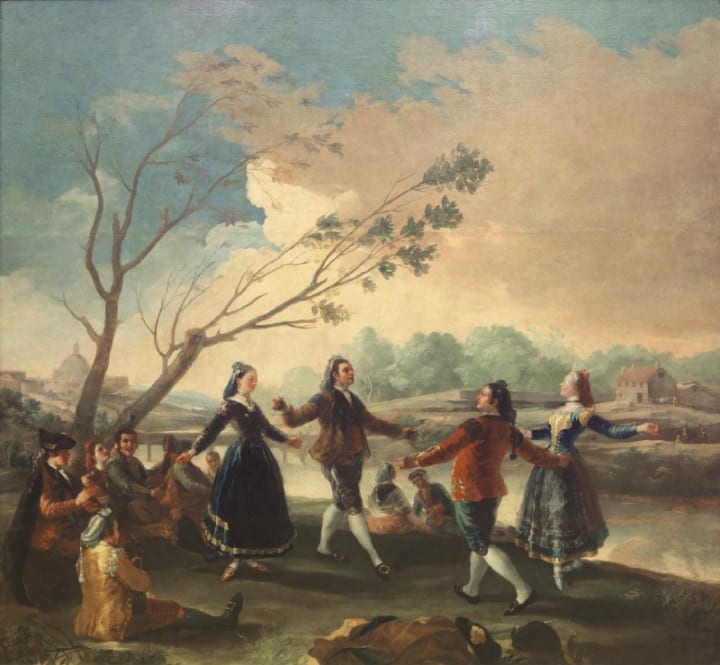
In 1793, he was diagnosed with a severe illness that left him deaf and it immensely impacted his later artworks. Moreover, the political turmoil and Napolean invading Spain and leading to bloodshed aggravated his line of thoughts, and that was reflected on his canvas.
Goya witnessed first-hand the French occupation of Spain in 1808 and painted The Second of May 1808 that represented the widespread rebellion of the common people and sparked the Peninsular war.
From this artwork until his death, he painted a wide variety of paintings concerned with insanity, mental asylums, witches, satanic figures, religious and political corruption.
Yard with Lunatics is one such painting where he portrayed two demented caught up in a brawl with their warden for beating them.
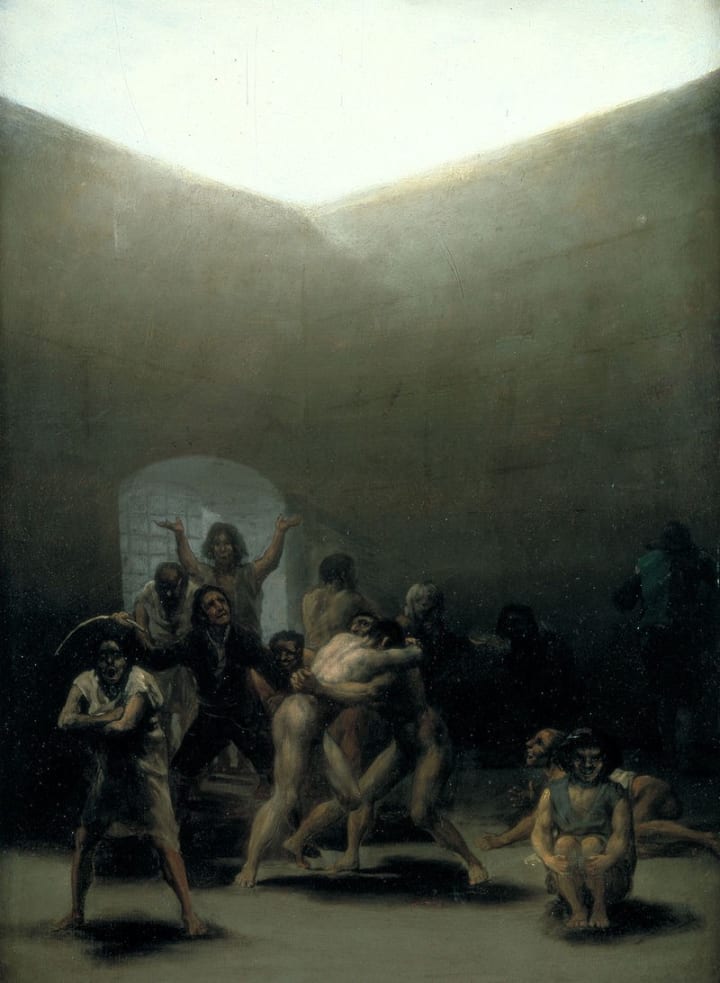
In 1819, at the age of 72, he moved to a country house called Quinta del Sordo (Deaf Man's Villa). Although the house was named after the previous owner, who was deaf, Goya was nearly deaf when he moved into this house.
It is believed that his solitude, physical illness, fear, and hysteria gave rise to the creation of Black Paintings. These paintings were never intended to leave his villa and get exhibited in public. But nearly 50 years after his death, the murals were taken down the walls, attached to the canvas by restorer Salvador Martínez Cubells, and displayed in the Prado Museum.
The Black Paintings
Saturn Devouring His Son has been the most disturbing and dark paintings out of all of them. It depicts the Greek myth of Titan Cronus who feared that he would be overthrown by one of his children, ate each one upon their birth.
Another grotesque painting is the Two Old Ones Eating Soup which represents two old men replicating skeleton-like features.
The Dog by Goya shows the dog in distress(literally drowning) and lost in the vastness of rest of the image.
Witches' Sabbath is another one of the Black Paintings that portrayed Satan in the form of a goat groaning over a coven of terrified witches.
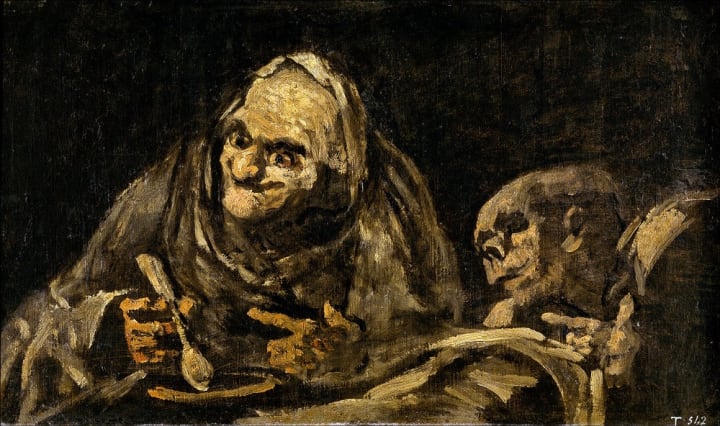
Goya was an artist operating in his own space and time, not communicating anything to anyone, expressing himself to himself alone.
Last thoughts
"Some people can hardly even look at them," says Teresa Vega, an art historian who leads guided tours in the Prado museum and leaves that room for last. "I've had plenty of clients who didn't like them at all. But when they walk in, they are always surprised. I don't think I've ever seen a visitor whose expression hasn't changed. Even a yawning teenager will wake up when they see them."
We might call The Black Paintings grotesque and dark. We might not be interested in gazing at them.
But the truth is, these paintings are a reflection of Goya's state of mind during those troubled times. These are a portrayal of his fear of insanity and bleak outlook of humanity.
In reality, these paintings were not meant for the general public and are beyond our interpretation.
Don't try to understand everything in art, because sometimes it's not meant to be understood, but to be accepted.
References
1. The Secret of the Black Paintings
2. Goya's Black Paintings: ‘Some people can hardly even look at them’
About the Creator
Kamna Kirti
Art enthusiast. I engage with art at a deep level. I also share insights about entrepreneurship, founders & nascent technologies.
https://linktr.ee/kamnakirti


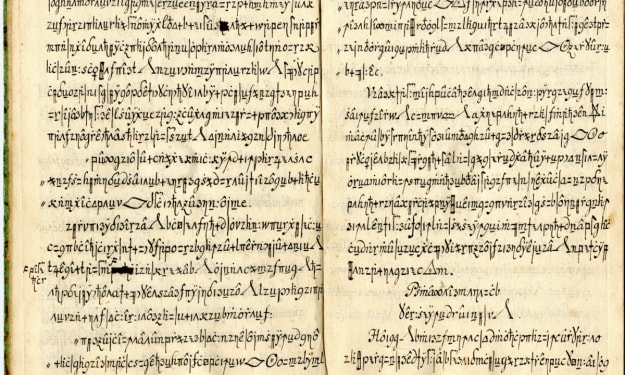

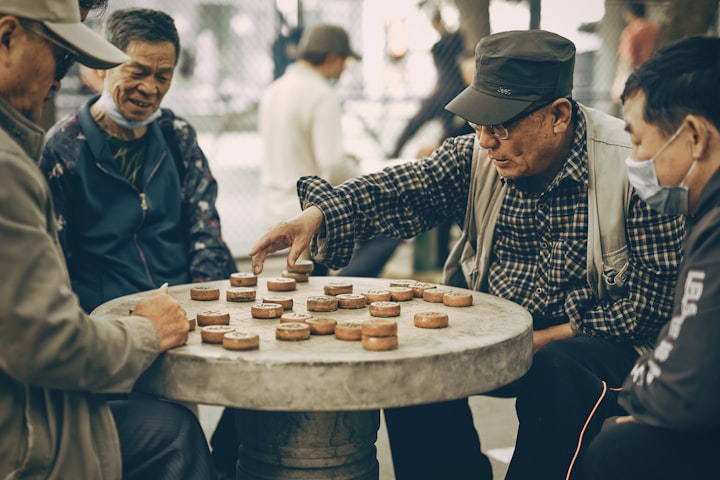

Comments
There are no comments for this story
Be the first to respond and start the conversation.